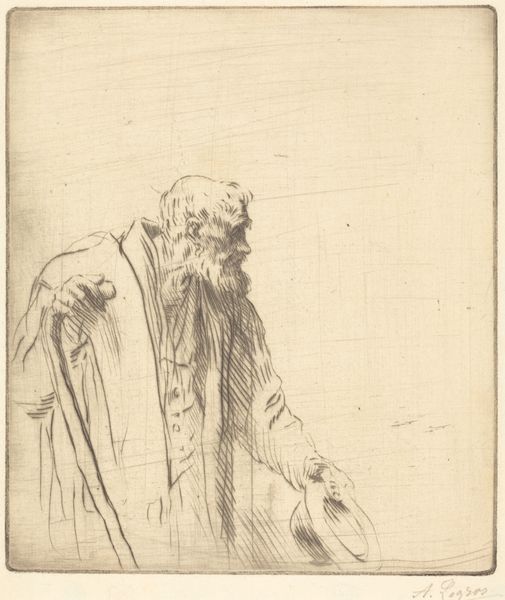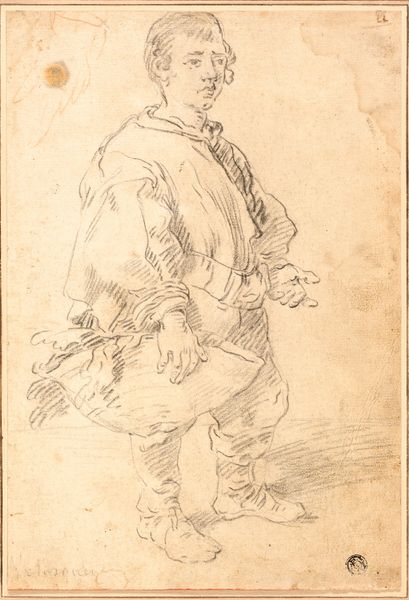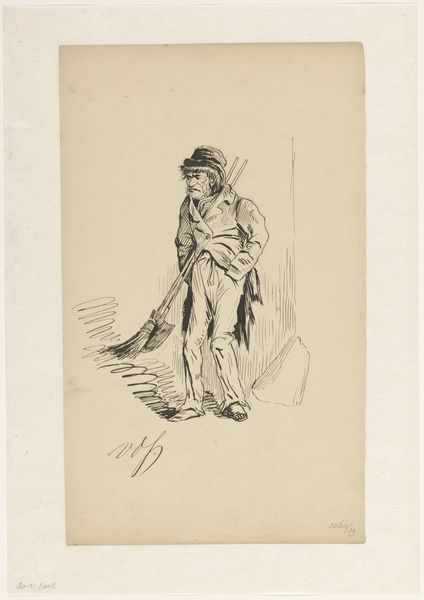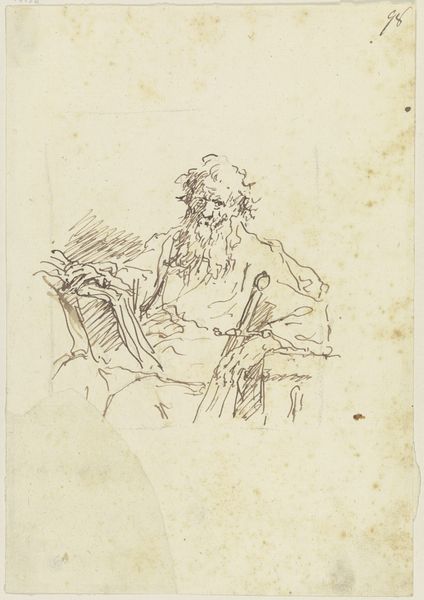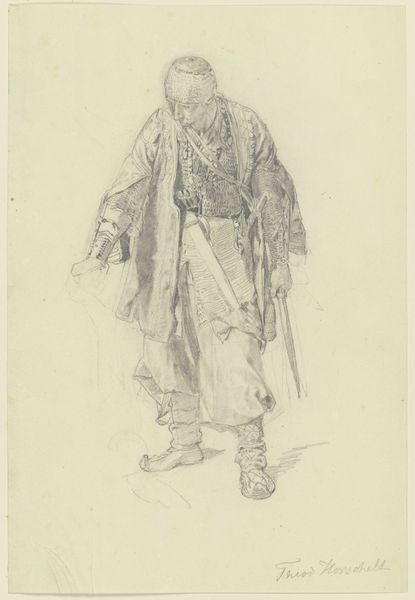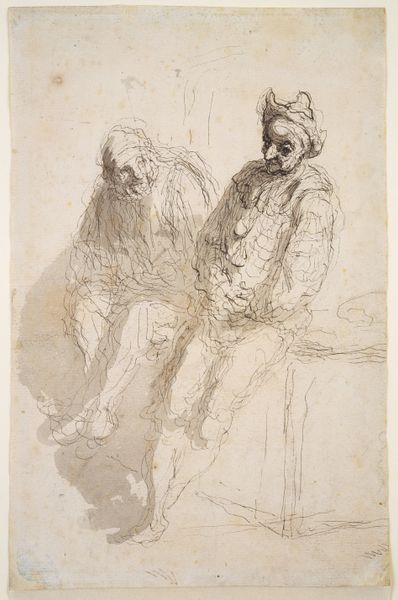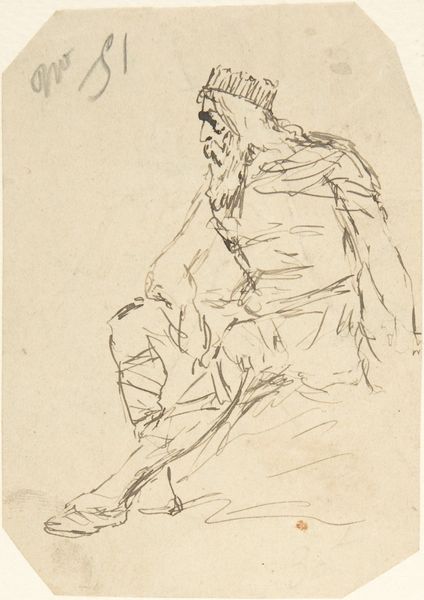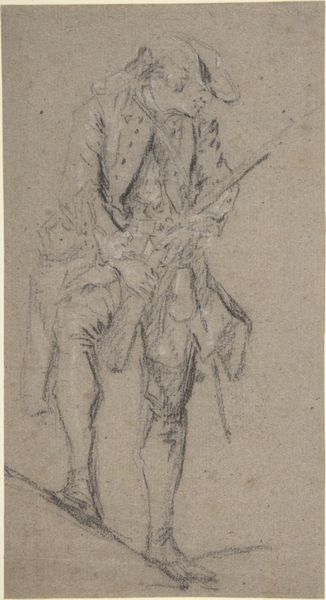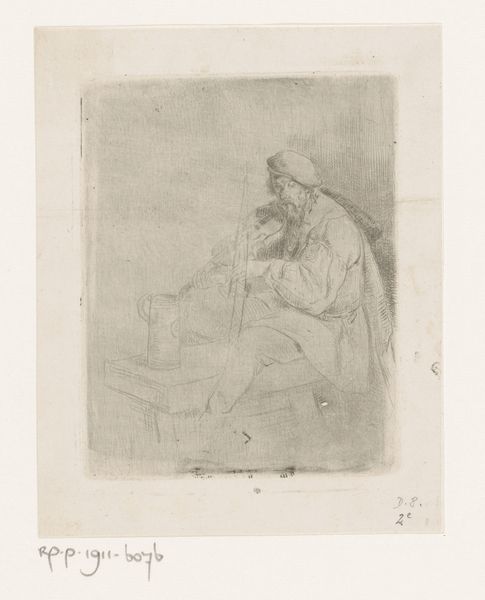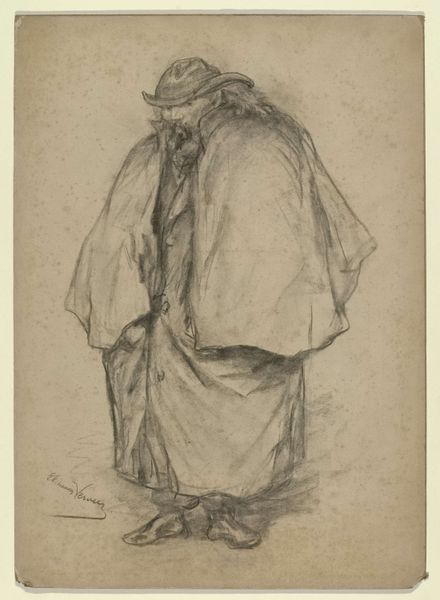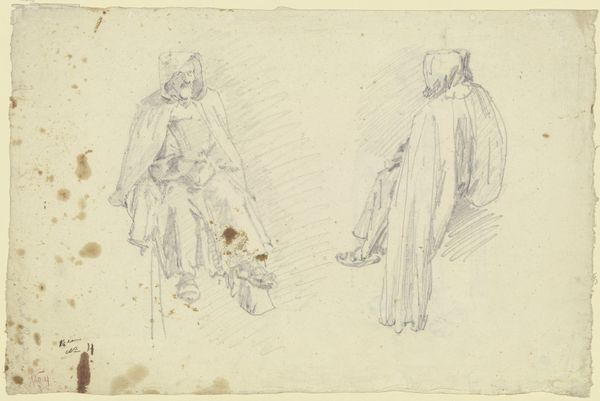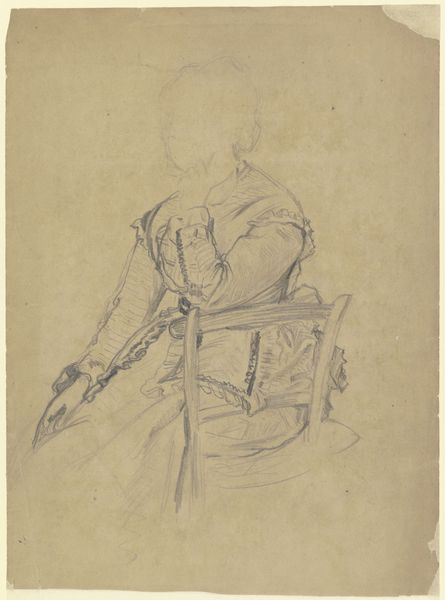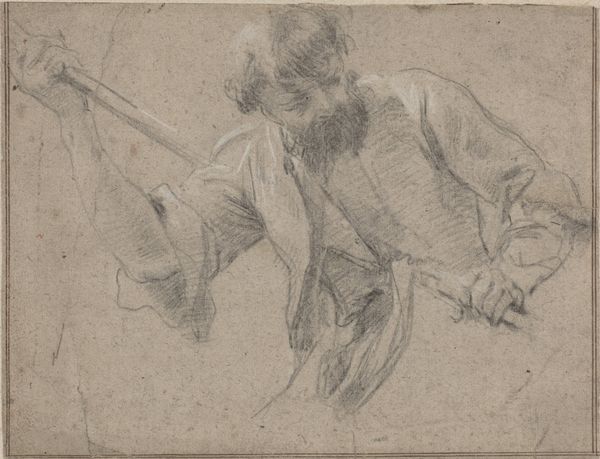
drawing, chalk, graphite, charcoal
#
portrait
#
drawing
#
baroque
#
chalk
#
chiaroscuro
#
graphite
#
charcoal
Copyright: Public Domain
Rembrandt van Rijn created this drawing, "Old Man Seated (The Drunken Lot)," with pen and bistre. Observe the interplay of light and shadow that defines the figure’s form. The composition is dominated by the seated man, whose posture suggests a state of inebriation or exhaustion. Rembrandt’s use of line is particularly striking. Notice the varying degrees of pressure, from the bold strokes that outline the figure to the delicate hatching that models the drapery. The subject’s heavy cloak and slumped pose communicate a sense of burden, perhaps reflective of human frailty. Rembrandt's formal choices invite reflection on existential themes. The sketch emphasizes the transient nature of existence and the vulnerabilities inherent in the human condition, and invites viewers to contemplate broader questions about mortality and moral failing. Note how the economical use of line and shadow evokes an emotional response, revealing the depth of the artist's psychological insight and technical mastery.
Comments
stadelmuseum about 2 years ago
⋮
This impressive chalk study of a seated old man, which formed part of the collection of Johann Friedrich Städel, is one of the few drawings bearing a complete autograph signature of Rembrandt. He may have signed the work in 1633 because he wanted to make a gift of this sheet or sell it, although the drawing itself must have been made earlier. In about 1630, when Rembrandt was an up-and-coming young artist in his home town of Leiden, he drew several studies of an elderly bearded man who also turns up in paintings and prints created around the same time. The model probably must have appealed to Rembrandt because of his expressive appearance, which made him suitable for awe-inspiring figures such as prophets and apostles. The highly informal seated pose in the drawing can also be found in an early painting of Rembrandt's which has survived only in the form of a reproduction print and which shows the inebriated Lot with his daughters (Genesis 19). Shortly before God destroyed the sinful city of Sodom, he warned Lot, who fled with his family. His wife turned back out of curiosity to view the inferno and was turned into a pillar of salt. When Lot was alone with his daughters in the mountains, they feared they would no longer be unable to find husbands. They made their father drunk and, while he was unconscious, conceived children by him.The drawing was in all likelihood created as a study for this painting. Rembrandt has sketched the figure in a long cloak, trousers and doublet. It is drawn with energetic chalk lines which indicate the incident light, the texture of the clothing and the physical presence of the seated man. He created this effect by placing darker, sharper lines over lighter areas of chalk, which he then modelled in masterful fashion to form a whole. He made a correction to the position of the right hand, which is clasping a drinking bowl. Rembrandt used his chalk quite differently when depicting the old man's head and sensitive left hand, which is hanging down. With great restraint and sensitivity, he formed the relief of the skull, which is modelled by the light, and the face with its half-bleary, half-dismayed right eye. It seems as if Rembrandt wanted to capture the moment after the event, in which Lot regains his faculties and gradually becomes aware of what has happened.
Join the conversation
Join millions of artists and users on Artera today and experience the ultimate creative platform.
